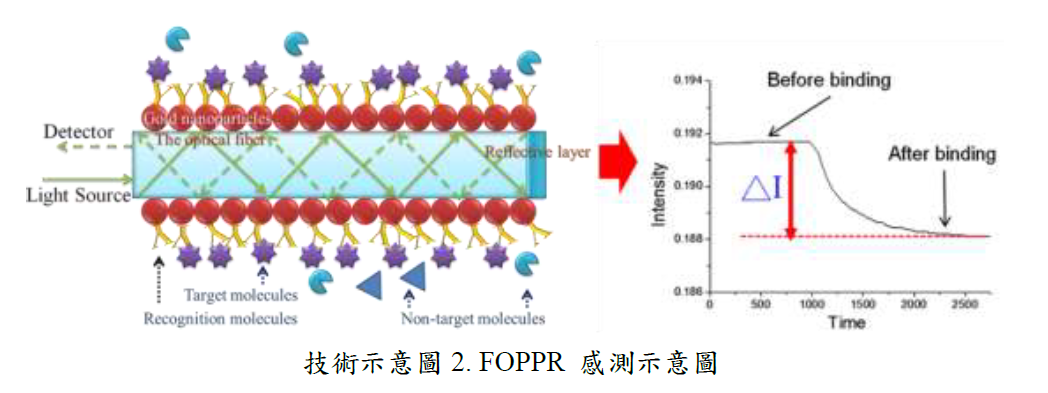| Technical Name | Nanoplasmonic Fiber Biosensor | ||
|---|---|---|---|
| Project Operator | National Chung Cheng University | ||
| Summary | The nanoplasmonic fiber (NPF) sensing platform system combines the localized surface plasmon resonance (LSPR) of gold nanoparticles (AuNPs) with the advantages of optical fiber. The strategy of NPF sensing is to use an incident light of narrow wavelength band for excitation of PPR and then monitoring the intensity of light exiting the fiber. Molecular binding of an analyte with a conjugated recognition molecule on the AuNP is transduced to a local increase in refractive index (RI) of the medium surrounding the AuNPs and hence an increase of plasmon absorbance of the AuNPs. In other words, when the plasmon absorbance of the AuNPs on the optical fiber increases upon molecular binding, the intensity of light exiting the fiber decreases and follows the molecular binding event in real-time. In addition, the sensing system utilizes the multiple total internal reflection (TIR) and the evanescent wave (EW) properties of optical fiber to enhance the absorption by AuNPs and significantly enhance the signal-to-noise (S/N) ratio. |
||
| Scientific Breakthrough | 此技術為光纖式定域電漿共振感測器的基本架構技術,並且整合工程技術成為全球首創之感測系統與方法。 |
||
| Industrial Applicability | 奈米電漿子光纖生物感測器在奈米貴金屬的表面上修飾不同的辨識分子即可應用在各領域的生物檢測分析。 |
||
other people also saw







